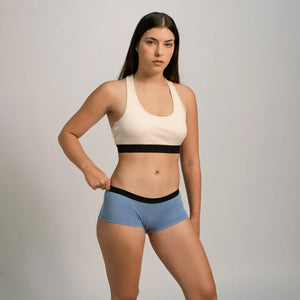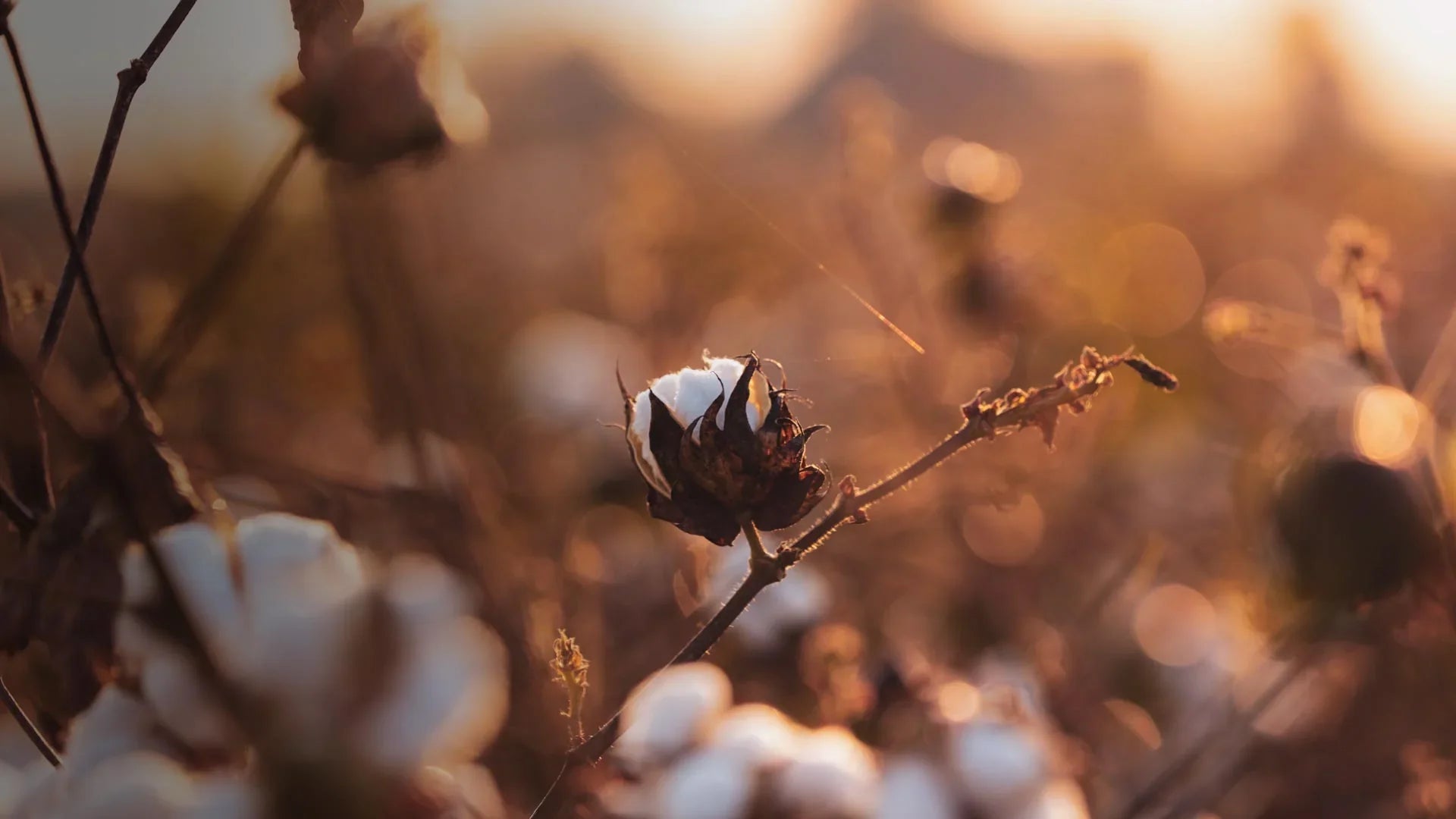The Rise of Haute Couture and
The Fashion Industry

AYA | NOVEMBER 5, 2024
READING TIME: 4 minutes
The "Century of Fashion" (1860-1960) saw fashion emerge as a distinct branch of the textile industry, driven by iconic figures whose names are still celebrated today: Coco Chanel, Elsa Schiaparelli, Cristóbal Balenciaga, and, most notably, Christian Dior. [1]

Christian Dior in 1957. Image credits: SACLÁB
So, what spurred this remarkable evolution? One key factor was the rise of "replicas" in the fashion world. [2] Haute couture, known for its exclusive and meticulously crafted garments, initially produced only a handful of pieces per model, often no more than 1,000 garments when no clothing was being made for sale from synthetic fibers—in the 1920s. [1]
But as the interwar period drew to a close, the second golden age of cinema and the economic recovery of powerhouses such as the United States and France created new demand. Stars in a nascent market like Hollywood looked to the most famous companies of the time to promote their artists. [1] So fashion and the world of entertainment formed an alliance that to this day propels each other forward.
Pioneering brands like Chanel and Dior seized this golden opportunity. They expanded their reach by selling haute couture collections to multinational firms, a strategic move that allowed them to scale up production and make high fashion more accessible to a broader audience.
For example, Chanel’s production skyrocketed to an impressive 28,000 garments annually in the 1950s, representing a staggering 280% increase in output compared to previous years. [1]
It was a clear sign that fashion was no longer confined to the realm of exclusivity but was becoming a major player in global industry.

Increase in the volume of clothing production in the United States (in thousands of tons). [3]
The chart presented highlights a significant upward trend in the annual clothing production volume in the United States. From 1960 to 1980, production in the country increased by 45%, translating to an additional 770,000 tons of clothing. But why is U.S. production so crucial for measuring the growth of the fashion industry?
The influence of cinema and music during this period cannot be overstated. Designers like Dior and Balenciaga capitalized on the global fascination with Hollywood. Dior's introduction of the "New Look" in the post-war era was nothing short of revolutionary. [4] This new silhouette, characterized by its sculpted waistlines and full skirts, was showcased by glamorous movie and music stars, leading to a dramatic increase in fashion sales.

New Look by Dior. Image Credtis: MEDIUM.
The U.S. emerged as one of the fastest-growing markets for clothing, [1] further fueling the industry 's expansion. Balenciaga, known for his extravagant and innovative styles, also played a crucial role in this fashion renaissance. [5] His designs pushed boundaries and contributed to the industry’s meteoric rise. The proliferation of clothing lines, the advent of synthetic fibers, and the influx of emerging fashion brands all contributed to this fashion boom.

Tonneau by Balenciaga. Image Credits: Fionaway.
The rise in the number of clothing lines, the ease of production due to synthetic fibers, and the influx of emerging fashion brands all contributed to this boom.
In conclusion, the evolution of haute couture and fashion as an industry reflects a fascinating journey of growth and transformation. From the meticulous craftsmanship of early haute couture to the digital revolution that reshaped the industry, fashion has evolved into a global powerhouse.
The alliances between fashion and entertainment, coupled with technological advancements, have propelled the industry to unprecedented heights, making it an integral part of our cultural and economic fabric. [6] As we look to the future, one can only imagine how fashion will continue to evolve and influence the world.
But was this enough to explain a staggering 230% increase in clothing production from 1980 to 1990, resulting in an average annual production of 50,000 tons? There is an answer: the digital age had arrived. Read more here.
Glossarykeywords
Haute Couture:
A french term referring to high-quality clothing lines designed for specific customers and with limited production.
Multinational firm:
An organization that has facilities and assets in more than one country, and usually has a headquarters in the home country.
New Look:
Christian Dior's first haute couture collection was presented in February 1947 in Paris, whose main characteristics were rounded shoulders, a fitted waist and a wide A-line skirt.
Replica:
Replica goods are close copies of the original goods. Also referred to as knockoffs, they are acknowledged to be modeled after the original famous product. Therefore, even though they share a striking resemblance with the original goods, they are not passed off as being the real deal.
Glossarykeywords
Haute Couture:
A french term referring to high-quality clothing lines designed for specific customers and with limited production.
Multinational firm:
An organization that has facilities and assets in more than one country, and usually has a headquarters in the home country.
New Look:
Christian Dior's first haute couture collection was presented in February 1947 in Paris, whose main characteristics were rounded shoulders, a fitted waist and a wide A-line skirt.
Replica:
Replica goods are close copies of the original goods. Also referred to as knockoffs, they are acknowledged to be modeled after the original famous product. Therefore, even though they share a striking resemblance with the original goods, they are not passed off as being the real deal.
References:
[1] Riello, G. (2016). Brief history of fashion. [1] 2016.
[2] The Week. The rise of replica clothing [Internet]. [cited 2024 Sep 25]. Available from: https://theweek.com/84784/the-rise-of-replica-clothing
[3] U.S. Environmental Protection Agency. Textiles: material-specific data [Internet]. [cited 2024 Sep 25]. Available from: https://www.epa.gov/facts-and-figures-about-materials-waste-and-recycling/textiles-material-specific-data
[4] Vanitatis. Silueta Royals: the new look Dior [Internet]. 2024 Mar 16 [cited 2024 Sep 25]. Available from: https://www.vanitatis.elconfidencial.com/estilo/moda/2024-03-16/silueta-royals-new-look-dior_3849336/
[5] Victoria and Albert Museum. Introducing Cristóbal Balenciaga [Internet]. [cited 2024 Sep 25]. Available from: https://www.vam.ac.uk/articles/introducing-cristobal-balenciaga
[6] Fundación Universitaria de Popayán. Oblicua Journal [Internet]. [cited 2024 Sep 25]. Available from: https://www.fadp.edu.co/revista-oblicua/
You don't have to put all the weight on your shoulders. Every action counts. At AYA, we fight microplastic pollution by making a 100% plastic-free catalog.
Visit Our Shop →You May Also Like to Read...
The Truth About Recycled Polyester in Fashion
Discover the hidden costs of recycled polyester. Learn why rPET isn't as sustainable as it seems and what real circular alternatives look like.
Synthetic Fabrics vs. Organic Cotton: Impact on Skin Health
Discover how polyester and other synthetic fabrics can irritate your skin and why organic cotton, especially Pima cotton, is a healthier and safer choice for sensitive skin.
What Peru Whispers: Organic Pima Cotton Grown with Tradition and Care
In the quiet corners of Peru, organic pima cotton is grown with respect for the land. A luxurious, timeless textile waiting to be discovered.
Why Sustainable Fashion Shouldn’t Be Fast Fashion
Recycled materials and green labels won’t fix fast fashion. Discover why real sustainability means slowing down.



















